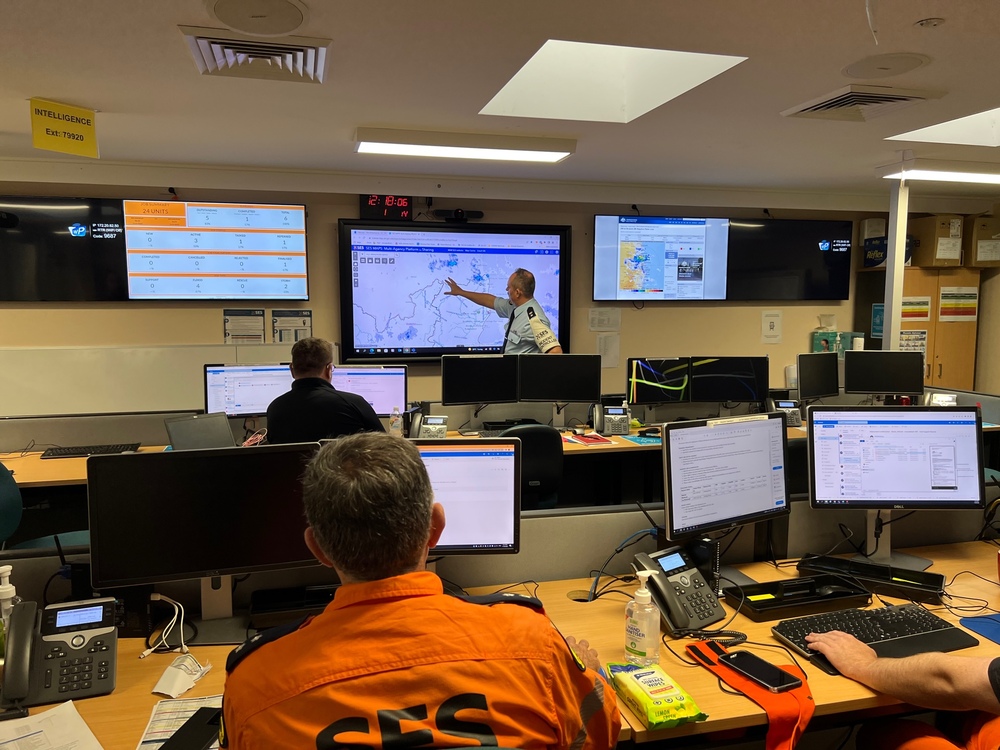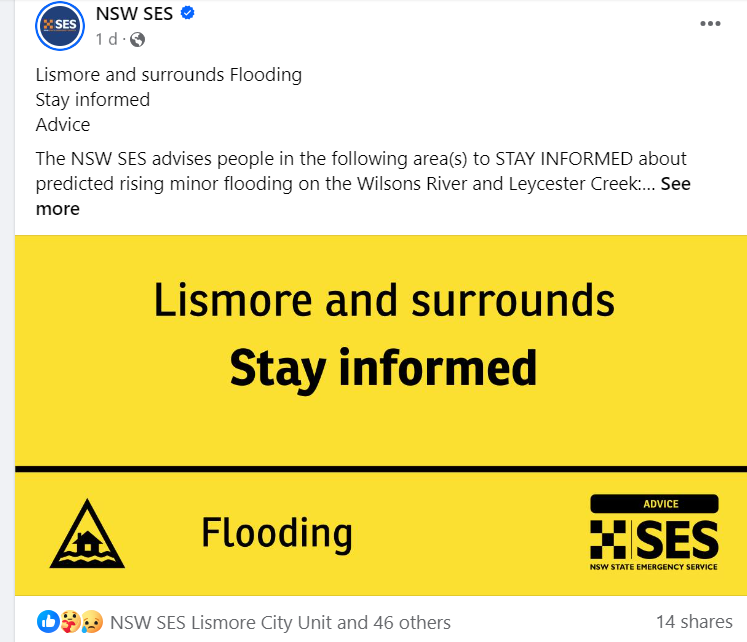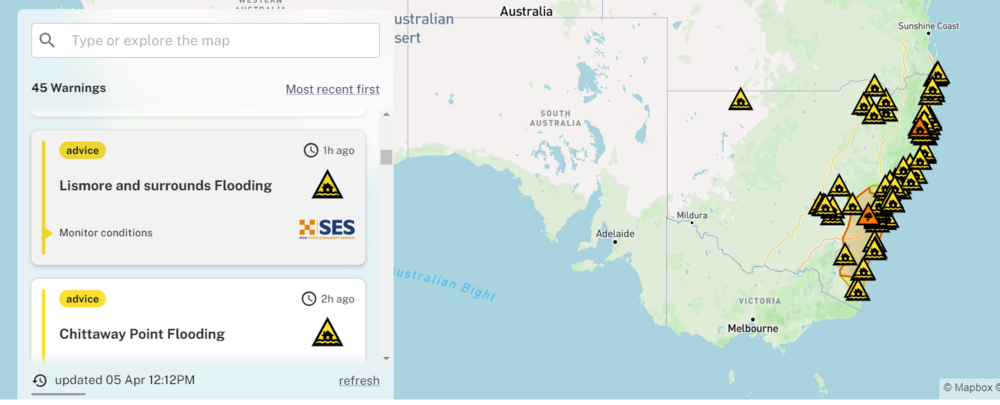Flood Readiness: Are We Better Prepared? Part 9 NSW SES and RFS
Lara Leahy
01 May 2024, 8:01 PM
 One of the new NSW SES Unimog's. One of the improvements post-2022 flood.
One of the new NSW SES Unimog's. One of the improvements post-2022 flood.The Lismore App's Flood Readiness - Are We Better Prepared? series covers key organisations that play a vital role in pre-flood warnings and in the rescue & recovery after a major flood. We are asking those organisations to let us know how the 2022 floods and Flood Inquiry have changed their procedures and processes so people will experience better outcomes.
So we know what to expect when the unexpected happens next.
Today, we speak to an organisation that plays a vital role during disaster rescue and recovery, the NSW SES.
***
As we draw closer to the end of the Flood Readiness series, we speak to the agencies that have the most direct impact on us in emergency situations. Today we look at both the State Emergency Service (SES) and the Rural Fire Service (RFS).
The NSW State Emergency Service (SES), being the nominated lead combat agency in an emergency, plays the primary role in coordinating a response in a crisis. Take the enormity of that responsibility in for a moment. Not only do they respond with their own obligations, but directing and mobilising many organisations - distributing responsibility and duties in a time-critical manner that will ensure people are kept safe, lives are protected as well as managing impacts for hand over to support a smooth transition to post emergency recovery. Let’s have a look at how they have prepared.
The SES reports, “The NSW State Emergency Service adheres to the State Emergency Management Plan (EMPLAN), which provides a coordinated and comprehensive approach to emergency management in NSW.”
“The NSW SES works with other emergency service partners, as well as other government departments, local councils and community groups at a state, regional and local level during emergencies.”
The RFS’s main duty is to assist the SES, as a spokesperson for the RFS states, “The NSW SES is the lead combat agency for flood and storm response, while the RFS support their efforts, ensuring swift and coordinated response to flood emergencies across New South Wales.
“It's crucial to highlight that in numerous remote rural areas across the state, the NSW RFS stands as the sole emergency service nearby and could be the initial responders in flood-related incidents. The RFS is prepared to offer immediate assistance in accordance with our available capabilities.”

(The SES unit in Goonellabah during a briefing session in 2022)
The influence of the Flood Inquiry has made a large impact on the structure and obligations of the SES. The SES report said that “In June 2022, the NSW Government announced a $132.7M investment into NSW SES facilities, resources and staffing. As part of this funding, the NSW SES split its Northern and Western Zones, effectively creating two additional zones to service regional communities.
“The establishment of the North Eastern Zone, which covers Tweed Heads in the north to Urunga (south of Coffs Harbour) in the south, created more local jobs for local people, allowing NSW SES to support the community while also harnessing the local knowledge of those who are familiar with the area.
“Through this zone enhancement, NSW SES has effectively restructured its operations in Northern Rivers to better support and service the community. There has been a substantial increase in the number of paid regional staff, including additional roles based in Goonellabah near Lismore. The Northern Rivers Capability Unit, based in Goonellabah, provides specialised support to all local units, including those units that were physically affected by flooding in 2022.”
To support the new structure, additional training has been provided, “There has been a significant increase in training to support the influx of new volunteers. Additional courses have been scheduled to support Northern Rivers units and ensure any new members are ‘job ready’ as soon as possible.
“At NSW SES headquarters, more than 100 additional incident management personnel have been trained and the surge capacity for call taking during emergencies has increased.
“A new dedicated senior decision support hydrologist has been embedded within the SES, providing the ability to run modelling on any catchment at any time.”
The RFS works alongside all emergency response crews, “During flood-based emergencies, the RFS communicates with the Police, or, where a Flood Rescue Area of Operations is declared, the Incident Management team appointed, along with other agencies including the VRA, SES, Fire and Rescue, Ambulance, and Marine Rescue.”
The RFS’s roles are varied and critical to the emergency response, “In larger and longer flooding events, like in Lismore during 2022, the RFS supports the public and government agencies with personnel, aviation assets, communications, logistics, transport, heavy plant, base camps and incident management expertise. Crews assist the SES with rescue, recovery and clean up.”
The RFS has also been increasing its member “numbers, “This year, the RFS will be establishing a number of brigades with members qualified in land- based, on-water or in-water rescue skills. These brigades will be equipped with appropriate Personal Protective Equipment (PPE) and rescue equipment to respond to flood rescues when required.
“The RFS operates several aircraft equipped with dedicated rescue personnel. Between 2022 and 2023, these teams executed over 250 flood rescue operations, often navigating through challenging circumstances. The organisation remains committed to enhancing its proficiency in this domain, evident through the implementation of night aviation rescue capabilities.
“Over the last two years, we have equipped our fire trucks with 4,000 basic rescue kits and provided further training to our members to help them assist members of the community escape floodwaters where required.”
The SES has also acquired new equipment to assist their duties, “Additional vessels and vehicles and light storm trucks have been delivered across our North Eastern Zone, as well as a Unimog high clearance vehicle which is permanently based at Lismore.”
“At a local unit level, contingencies have been put in place to ensure that units can still operate effectively if local communication and electricity networks are down, including the use of battery-operated satellite connections. NSW SES North Eastern Zone units, including those in the Northern Rivers, operate on a cluster-based response, providing around the clock support to local communities.”
The SES has been responsive to making updates to their operations post 2022 floods, “The Hazard Watch platform was launched in September 2022, and provides more accurate and timely information to the community. This has automated processes to prepare evacuation and warnings, resulting in advice being issued earlier.
“This platform also includes the implementation of the Australian Warning System (AWS), which provides clearer and simpler messages for the community to be prepared and take action where required.

“NSW SES, in partnership with Queensland University of Technology, completed detailed community research to improve the design and content of warnings and evacuation products. This significant social research project ensures the messaging is inclusive – along with the colours, iconography and action statements. This ensures our warnings provide critical information to the public in a way that is clear and easy to understand. HazardWatch has gone through rigorous accessibility testing to ensure it is usable by people with different types of disabilities.
“NSW SES staff and units have undertaken significant work to socialise the new SES Warnings system among key stakeholders – specifically in Lismore the Local Emergency Management Committee was briefed, as were key community group leaders. Targeted outreach work in the Northern Rivers area has been focussed on groups with higher risk and/or higher needs - such as caravan parks, aged care and independent living centres.”

Image: An example of the new warnings released by the SES
In keeping with improving information and communication channels, “NSW SES employed additional Community Capability Officers in August 2022 in anticipation of continued higher than average flood and storm risk across the state.
“These staff are focused on pre, during and post-incident communications with at-risk communities, to increase the amount of communication and outreach work undertaken relevant to specific weather events and enable greater community preparedness.”
“The NSW SES also consult with the NSW Reconstruction Authority on the State Disaster Mitigation Plan.” Concern for “more frequent and extreme weather cycles” has motivated action now for a safer future.
NSW SES has doubled the number of trained 132 500 call takers since February 2022, “Since February 2022, NSW SES has run 14 courses for 132 500 call takers, referred to as ‘flood storm call operators’.” At the end of 2023, the number of trained flood storm call operators exceeded 100. “The number of flood storm call operators working at any given time will vary depending on operational activity and predicted weather.
One of the noted body of rescuers assisting the SES during the 2022 floods were “spontaneous volunteers” - community members that recognised the increased need for rescuers and were in a position to help.
“The NSW SES is committed to ensuring that if members of the community wish to assist with flood response, they have the appropriate skills to do so. Engaging spontaneous volunteers has been the focus of a major project currently embedded within the NSW SES.
“The NSW SES understands the dangers, risks and capability required to perform effective and safe flood rescues and will work with the NSW Government to play a significant role in developing community capability in at-risk areas.
“Any members of the community who are interested in joining the NSW SES are encouraged to apply via their local unit.”
In future emergency situations, the outreach methods of the SES will vary depending on the situation, “The NSW SES uses a range of techniques to warn the public during incidents. Official warnings are displayed on our website and the Hazards Near Me App.

Image: Taken from the minor weather event in early April, 2024
“Door knocking also remains a valuable tool we use however in some situations may not be possible or appropriate. Geo tagged messages can also be distributed via our Emergency Alert system which can SMS mobile phones and call landlines. What specific method we use to warn residents all depends on the situation, the number of people needing to evacuate and how much time they have.”
The SES & RFS remind us that, “the 132 500 number is used for non-life-threatening calls only. During heightened periods of operational activity, callers are advised via a pre-recorded message that if their matter is life-threatening, they should hang up and dial Triple Zero (000).
“The NSW SES will engage with the communities via a number of platforms, including social media. However, the best location for current warnings and information is the Hazards Near Me App or the NSW SES website.”
Other stories in this series includes:
Part 1: Essential Energy
Part 2: Communications - Telstra and Optus
Part 2: Communications - TPG Telecom and nbn
Part 3: Police and Fire + Rescue
Part 4: Critical Flood Information
Part 5: Animals
Part 6: Federal Government
Part 7: Charities
Part 8: Local Government

